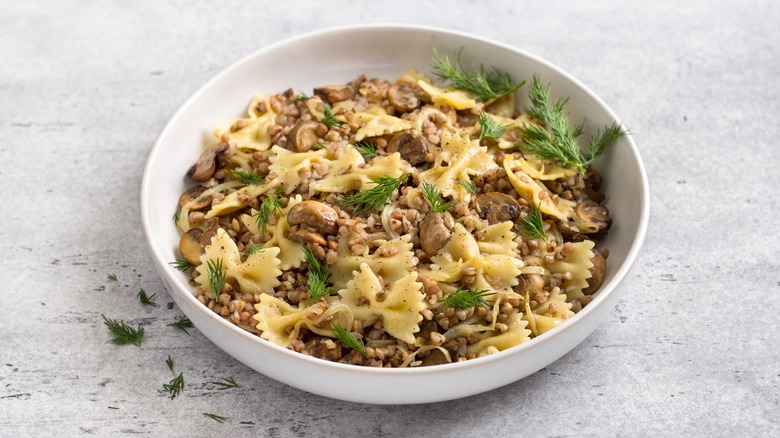Here's Why This Jewish Dish Is One Of Michael Twitty's Favorite Foods
We've all got our comfort foods. Whether it's a flavor that reminds us of a simpler time in our lives or a dish that helps us feel connected to friends, family, and traditions, comfort food gives a sense of familiarity and security. And in doing so, it provides a means of articulating individual and cultural identity. As America's food culture develops, two principal genres of comfort food that have worked their way into the mainstream are Jewish and soul food.
Both cuisines represent cultures shaped by diaspora as they had to adapt and retranslate the cooking traditions of their homelands. In the process, much of the history and significance surrounding dishes and ingredients have been obscured or destroyed over time. But with the efforts of scholars like Michael Twitty, and his works such as "The Cooking Gene" and "Koshersoul," we can rediscover the origins of modern American cuisine, framed in a way that acknowledges the vital contribution oft-overlooked figures like enslaved cooks and immigrants made to our contemporary food culture. Through this lens, he's found one Jewish dish in particular that stands out from the rest.
Michael Twitty's favorite Jewish dish speaks to his culinary philosophy
As a chef, food writer, and culinary historian, Michael Twitty is renowned for his work in promoting and preserving African American foodways, tracing culinary traditions of the American South back to their origins in African food culture. But as a Jewish person of color and teacher of Judaic studies, Twitty also dedicated an entire book, "Koshersoul," to examining the commonalities and shared backgrounds between American soul food, African cuisine, and Jewish cooking resulting from the trauma of cultural diaspora. His blog, Afroculinaria, explores soul food's critical role in the creation and expression of African American identity, and his writings also chronicle the shifts in food cultures over time, Jewish cultural issues, and politics regarding consumption and cultural ownership.
One of the reoccurring themes through Twitty's books and lectures is the importance of knowing your ingredients' history and cultural significance in the dish. "Every time you use an ingredient, you think about the stories behind the food. And it makes the food into a different experience," he says. This culinary philosophy explains why when Jewish food site The Nosher asked his favorite Jewish dish, Twitty enthusiastically replied with the humble Ashkenazi comfort food kasha varnishkes.
"I think sometimes people don't take the time with these middle-of-the-road, classic Ashkenazi dishes," explained Twitty. "You've got to use fresh herbs and real schmaltz." For Twitty, the elegance of kasha varnishkes is its simplicity, letting the quality of the ingredients shine through. in doing so, we honor the history and culture of the people who preserve traditional foodways, and learn to understand ourselves in relation to history, consumption, and cultural identity.
The cultural roots of kasha varnishkes
Kasha varnishkes, per Fifth Season, is an Ashkenazi noodle dish made of buckwheat groats, bow-tie noodles, and sauteed onions. According to the Encyclopedia of Jewish Food, kasha (or hulled buckwheat kernels) originated in Slavic regions of Southeastern Europe, and the term generally refers to any general hot cereal or porridge. Over time, Jews of Ukraine began using this porridge, along with meats and onions, as filling for dumplings known as kashe vareniki, which were more pierogi-like than the noodle dish we know today, details The Nosher. Kasha varnishkes later developed into its current, deconstructed form of mixed noodles and buckwheat groats, having been brought over to America by Jewish immigrants from Eastern Europe who then, Jewish cultural education program Aish suggests, met and adapted alongside Italian pasta makers living in New York City.
Like most comfort foods, kasha varnishkes evolved over generations of migrations, adaptations, and reinterpretations. But with each new rendition, the essence of comfort, nostalgia, and spiritual connection lives on. By rediscovering the history of comfort foods like this one, Michael Twitty seeks to preserve and venerate the legacy of cooks that history has often overlooked. Knowing about the history of the dishes we're consuming allows us to have a much deeper appreciation for the ingredients, the cultures, and the people who brought them together. When we do, Twitty celebrates to The Nosher, those dishes and experiences "become really awesome. It makes my heart sing."


